Window box ideas – 8 ways to style and maintain your arrangements for every season
Get your green thumb on with these stylish window box ideas that you can enjoy even from inside your home

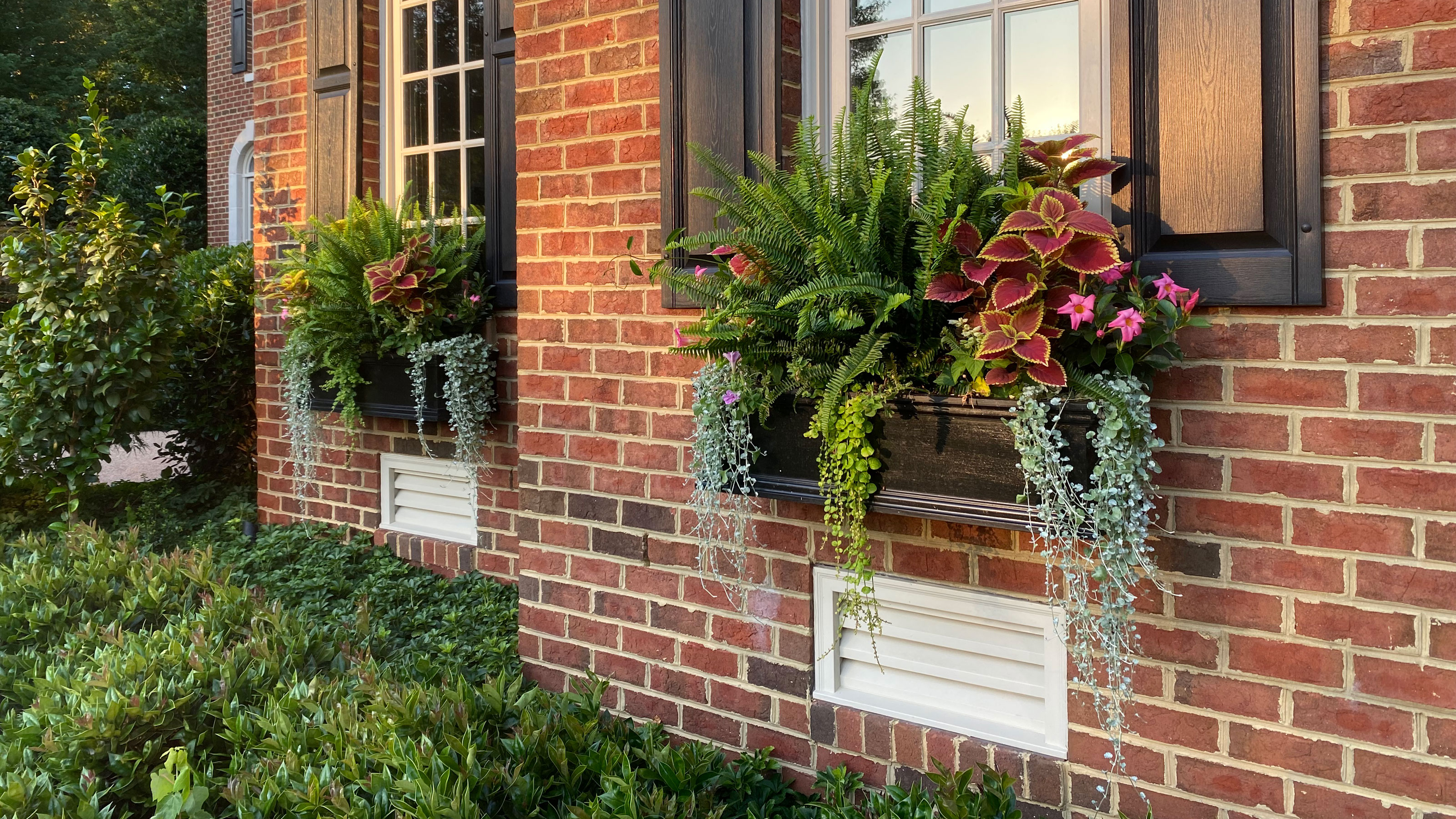
Window box ideas are a beautiful way to boost your home's curb appeal and breathe life back into any property all year round without breaking the bank. Window boxes are also an ideal solution for urban gardening, where your apartment might not have any green space to experiment with but you still want to use plants to spruce up your exterior.
Steph Green, garden designer and founder of Contained Creations, explains that creating a show-stopping window box is all about the right composition, suggesting that you should approach your window box design like a mini garden idea. 'Incorporate varying heights, textures, and colors of plants to create visual interest and contrast,' she says. 'Position broad leafed plants next to needly or lacy varieties.'
If you want a low maintenance garden that you can enjoy from both inside and outside your home, keep reading for easy window box ideas that will guarantee to catch the eyes of any passerby.
Window box ideas to boost your home's curb appeal
1. Choose the right plants for your arrangement
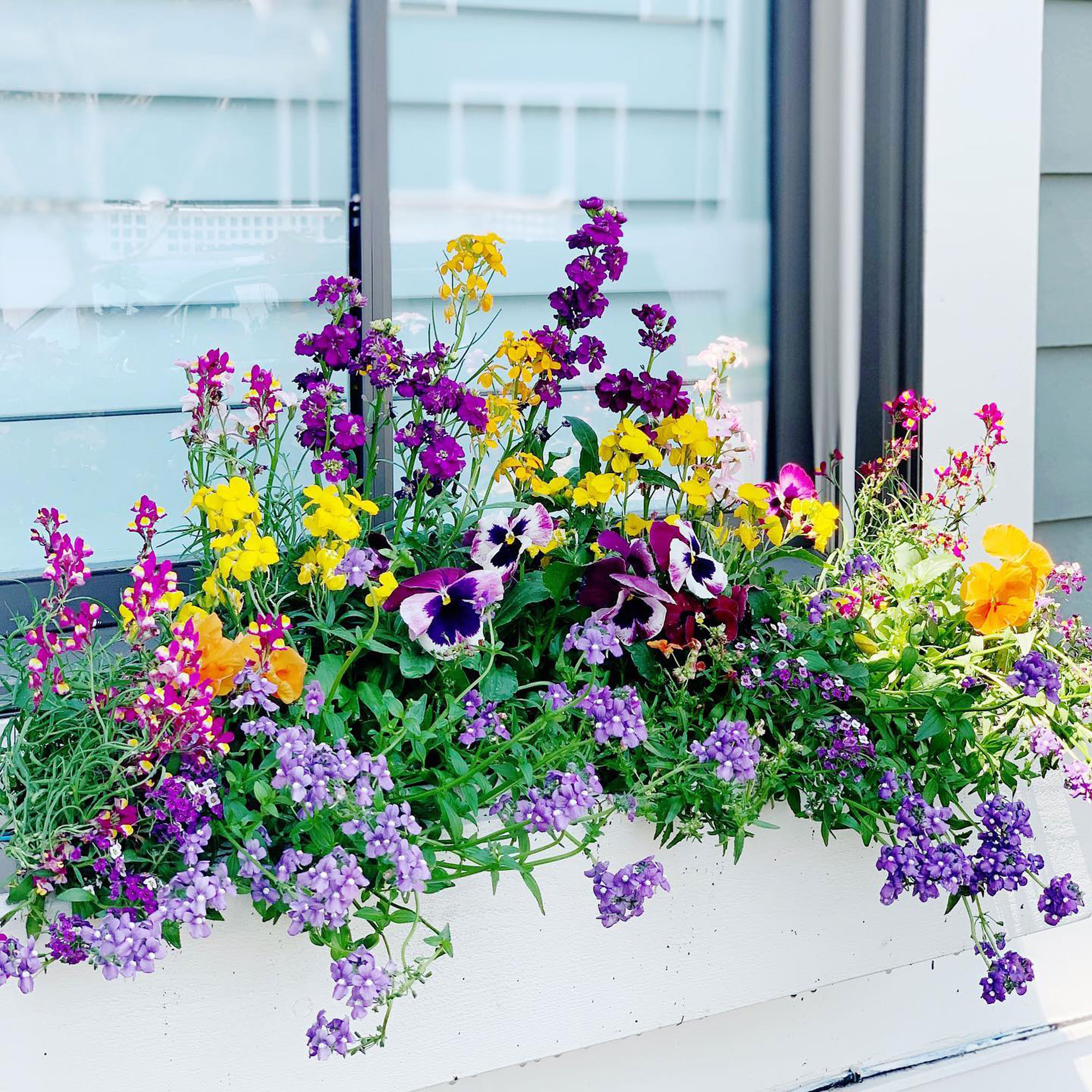
Knowing how to choose plants that are most suitable can be tricky when there are so many options out there. It's a good idea to plan this out depending on where the window box is going to be located and what the overall look you're going for is.
'Choosing plants for a window box depends on your preferences, the amount of light, and maintenance requirements,' says Quinn Roe, Indianapolis-based container garden designer and founder of Prim Planters. 'I prefer to include lots of color, texture, and variety of height when choosing plants for window boxes. The variation makes the window boxes stand out with regard to this creativity.'
2. Add height to your window box to create a dramatic look
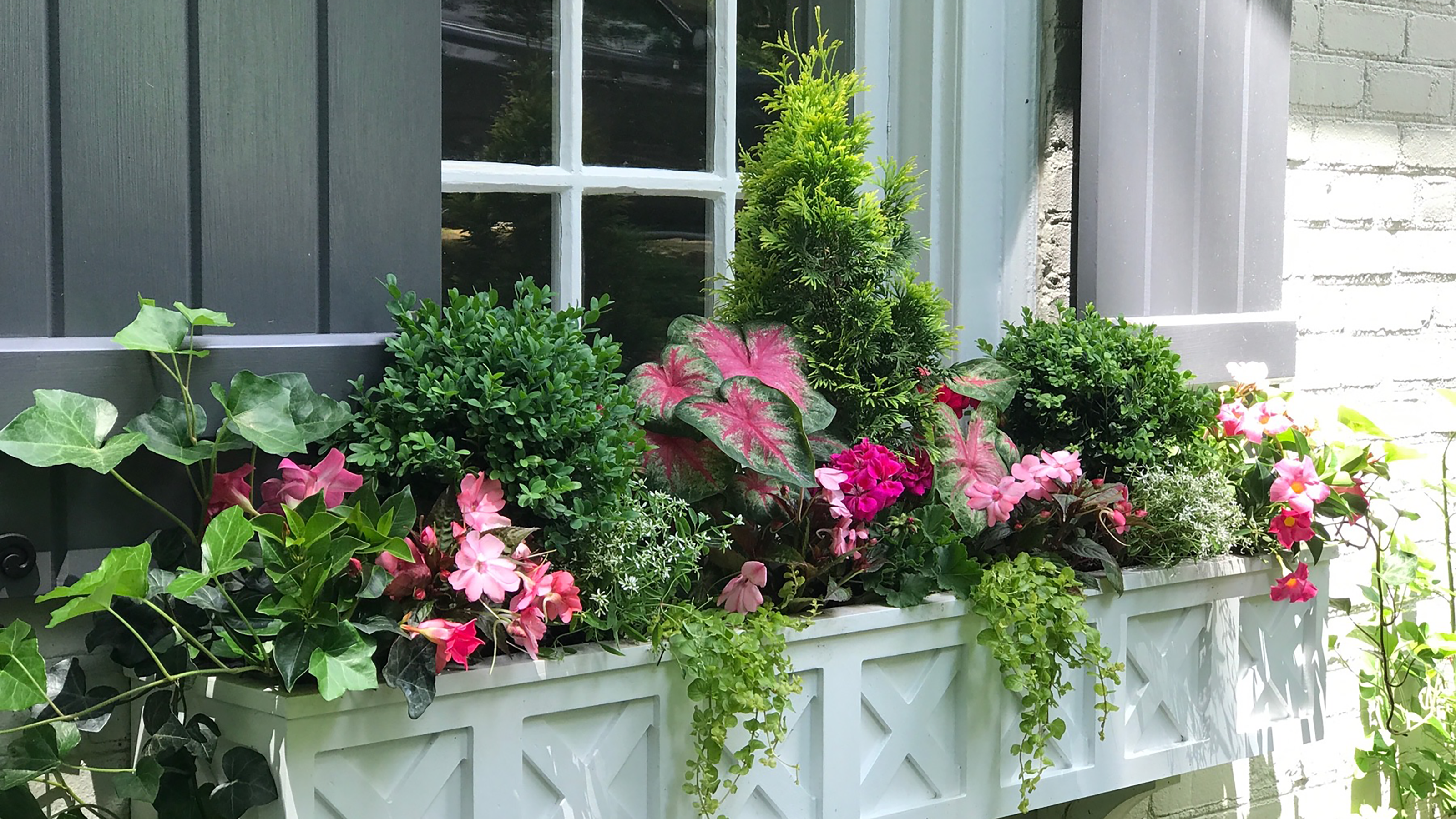
Get creative with your window box plants and incorporate the latest garden trends. The best, most stand-out boxes use dimension to make an impact. Through using different sized plants you can achieve a dynamic and eye-catching creation for not only your neighbors to enjoy, but for you, through your very own window.
Steph Green of Contained Creations, says: 'To achieve proper scale, a good rule of thumb is to have the tallest plant in your arrangement reach at least 100 percent of the height of your container. For a more dramatic look, go up to 200 percent. This approach is particularly effective when planting window boxes, which tend to be wide and short. The added plant height breaks up the long, low silhouette of the box and makes the arrangement more visible from a distance.'
The Livingetc newsletters are your inside source for what’s shaping interiors now - and what’s next. Discover trend forecasts, smart style ideas, and curated shopping inspiration that brings design to life. Subscribe today and stay ahead of the curve.
To achieve balance, it's best to place the tallest plant in the middle to act as the centerpiece, ensuring the height flows well throughout the box. When Steph is creating her own window boxes, she places the tallest plant at the back, allowing space for her to fit more plants in front of it. 'In larger, longer window boxes, I may space out three or even five 'centerpieces' to carry this height to the left and right sides and create a sense of rhythm and flow,' she says.
As well as your focal point plants, it's important to use shorter, but very full plants to achieve balance throughout the arrangement. 'I continue to add layers of shorter plants as I work my way out to the edges of the window box. To create a true showpiece, stuff it full of compatible plants in a variety of heights, colors, shapes, and textures,' says Steph, who recommends using colorful foliage as Coleus or Heuchera to break up the greenery in the box.
3. Make your window boxes last all year round
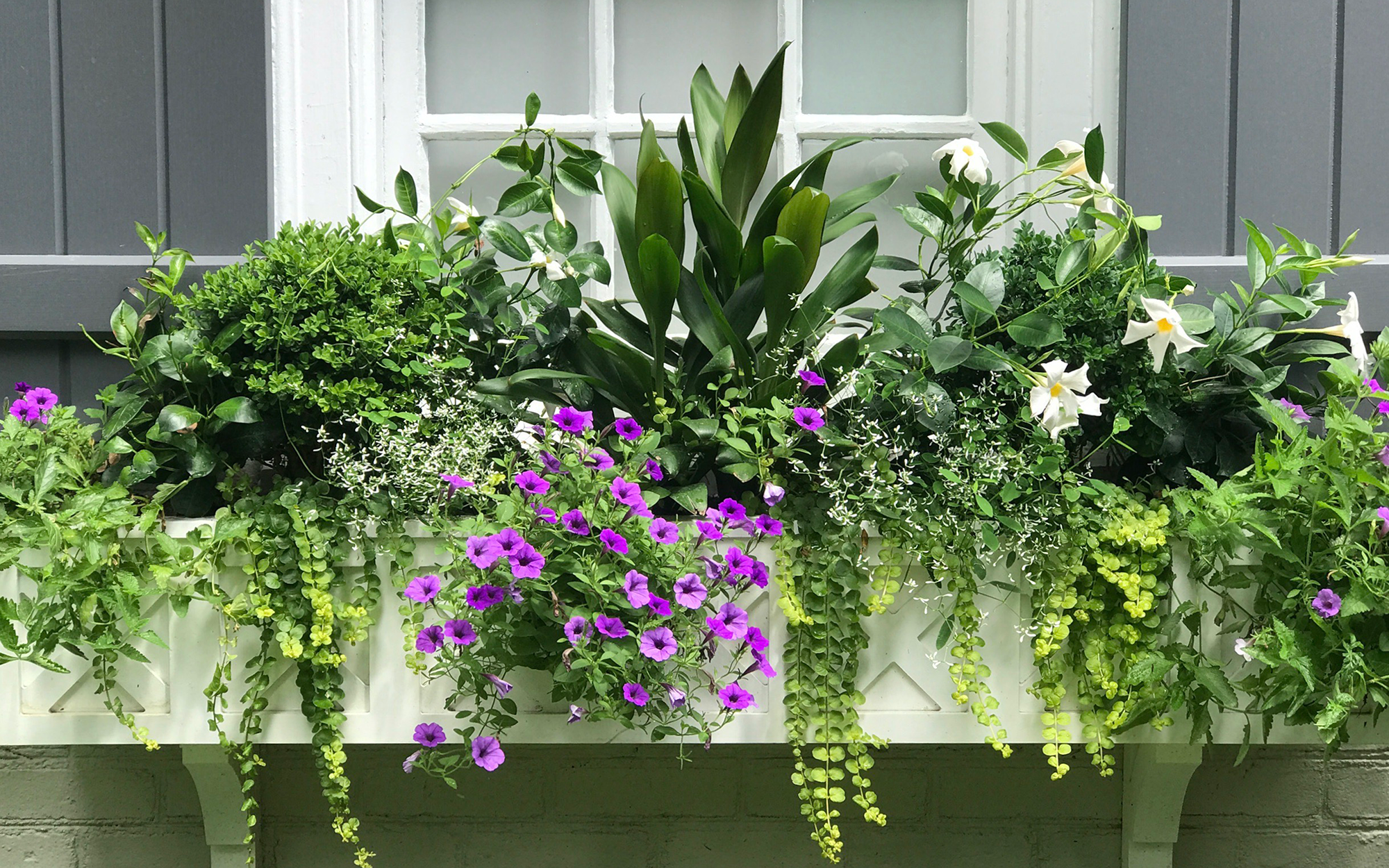
Window boxes don’t just have to be for spring. You can mix up your design with the latest flower trends throughout the year to ensure it’s always in season and flourishing at its best.
To make your window box as versatile and adaptable as possible, it’s essential to use evergreen plants. These are plants that retain their leaves and remain green throughout the year, and they’ll provide a consistent foundation to your window box that you can always work around without having to regularly replace them.
Steph Green at Contained Creations says: 'Some of my favorite [evergreen] options are Boxwood, Dwarf Alberta Spruce, Blue Point Juniper, Lemon Cypress, and even tiny Camellia. The spaces left between these foundation plants can be filled with seasonal flowers and foliage, which can be gently removed and replaced as often as needed.'
4. Get creative with ornamental cabbage
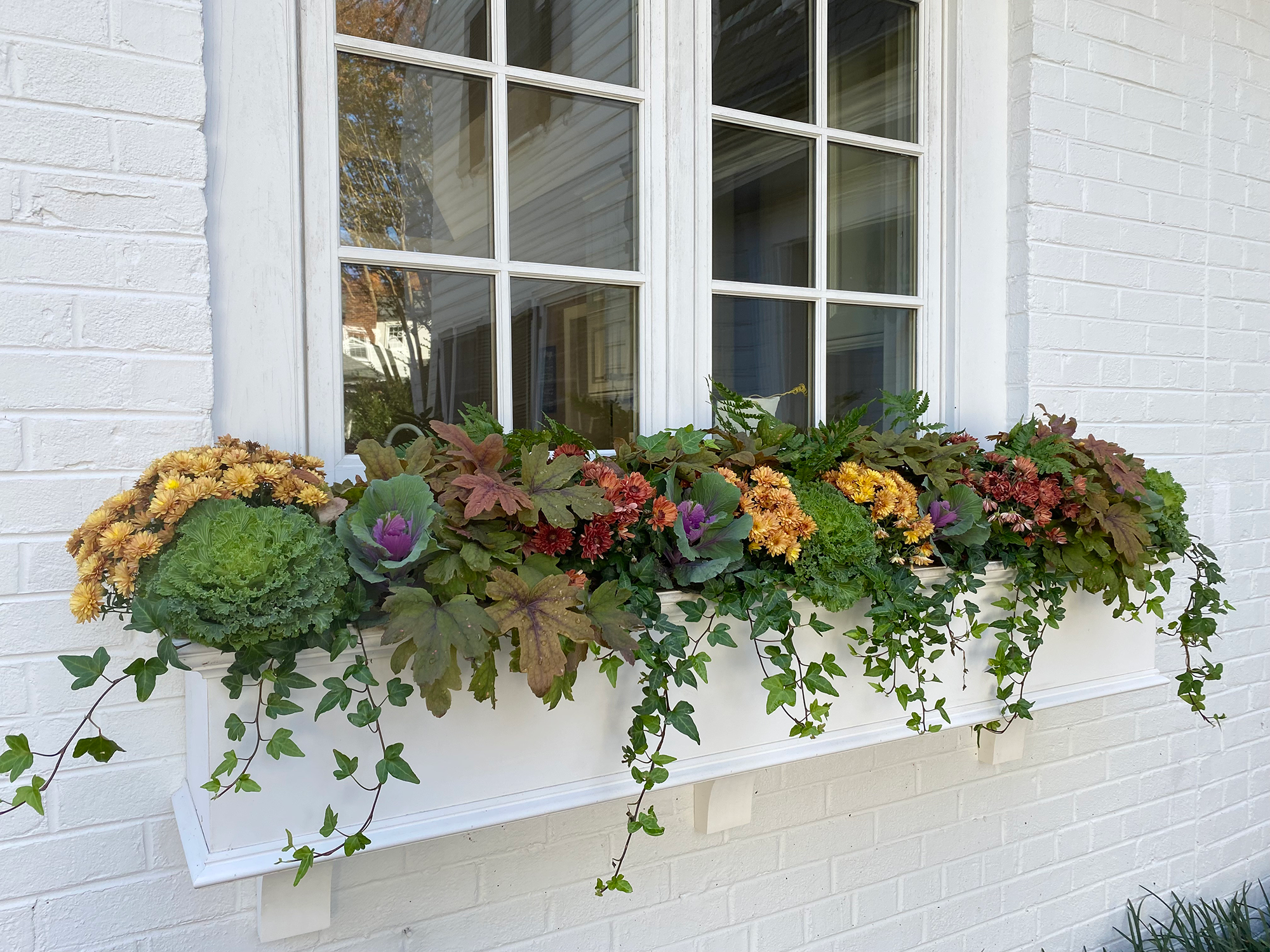
Ornamental cabbage and kale, sometimes known as Brassicas, are another way to make your window boxes work over the colder months, boosting your curb appeal, as they prefer a cooler growing season. Steph says: 'An added bonus of most cabbages is that they intensify in color as temperatures drop. So as some elements of your container garden may be wilting in early winter weather, the cabbages are reaching their peak.'
Brassicas can create the perfect look for any autumnal arrangement. 'They also remind us of the fall harvest table full of gorgeous produce, pumpkins, and gourds,' says Steph. 'Their broad, leathery leaves pair well with the thin plumes of fountain grasses and colorful faces of pansies and violas.'
5. Try a flowerless window box
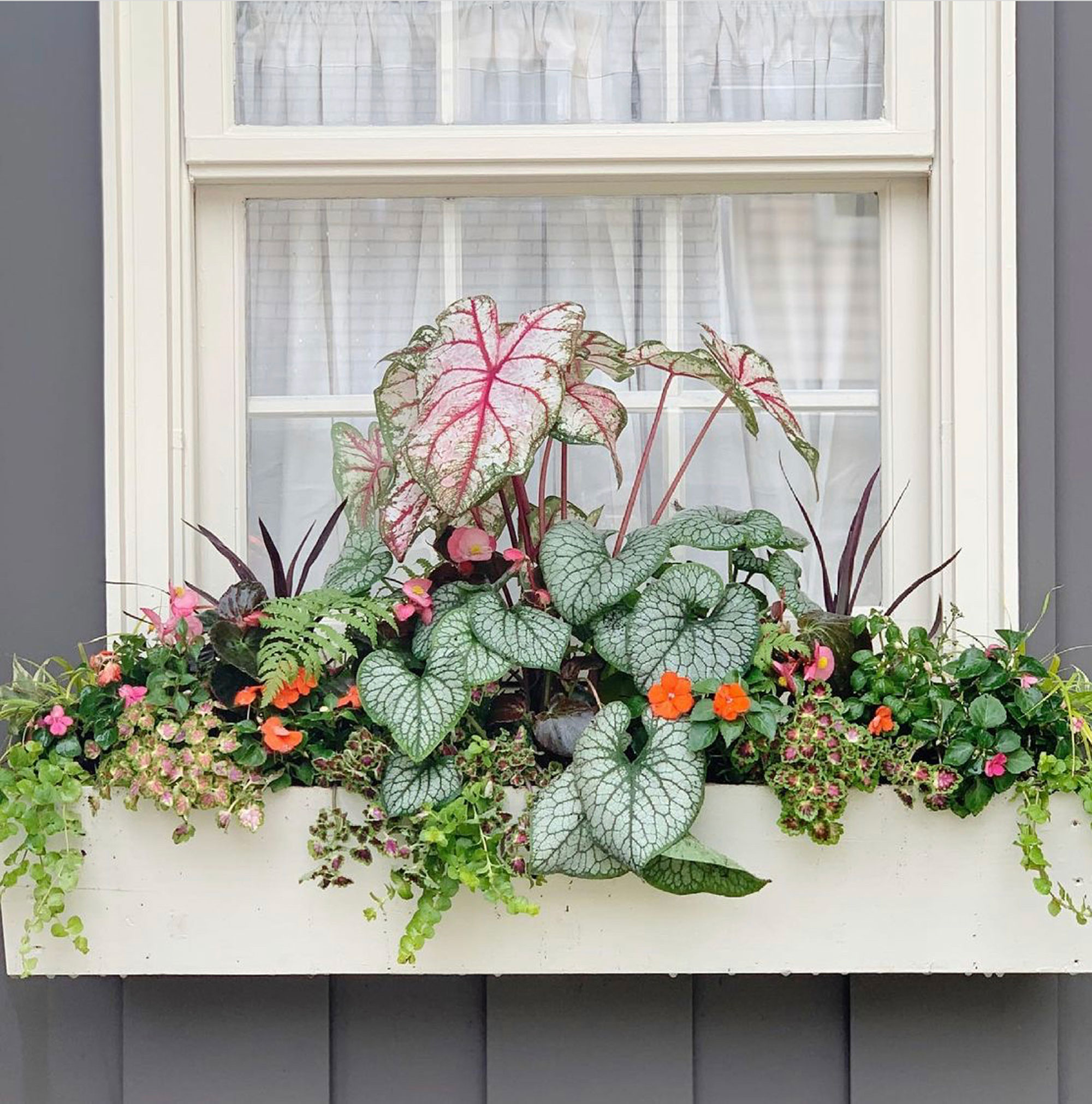
You don't always need to use bold colours and flowers to put together an eye-catching window box. There is a huge variety of flowerless plants that you can incorporate into your arrangement to create beautiful greenery that will enhance any home's exterior and complement your porch decor.
Quinn Roe at Prim Planters says: 'There are multiple options of plants in different shades of green that can be used creatively in a successful window box. Height, and textures of the plants make a great alternative to colorful planting.'
6. Maximise your space using trailing plants

Adding height isn't the only way to create an extravagant window box. You can take advantage of the space below your window box by incorporating a spiller plant that will hang over the sides of your container garden. 'There’s nothing quite like a blanket of Dichondra Silver Falls reaching down to the ground, or a lush mound of Sweet Potato Vine that looks as though it’s suspended in mid air,' says Steph Green at Contained Creations.
To brighten up your composition, Steph suggests using trailing plants with cream-white edges to their leaves, such as Variegated Plectranthus and Vinca Vine. 'For smaller boxes or tighter spaces, I love to use something a little less vigorous like English Ivy or Creeping Jenny,' she says.
7. Optimise your window box for shady areas
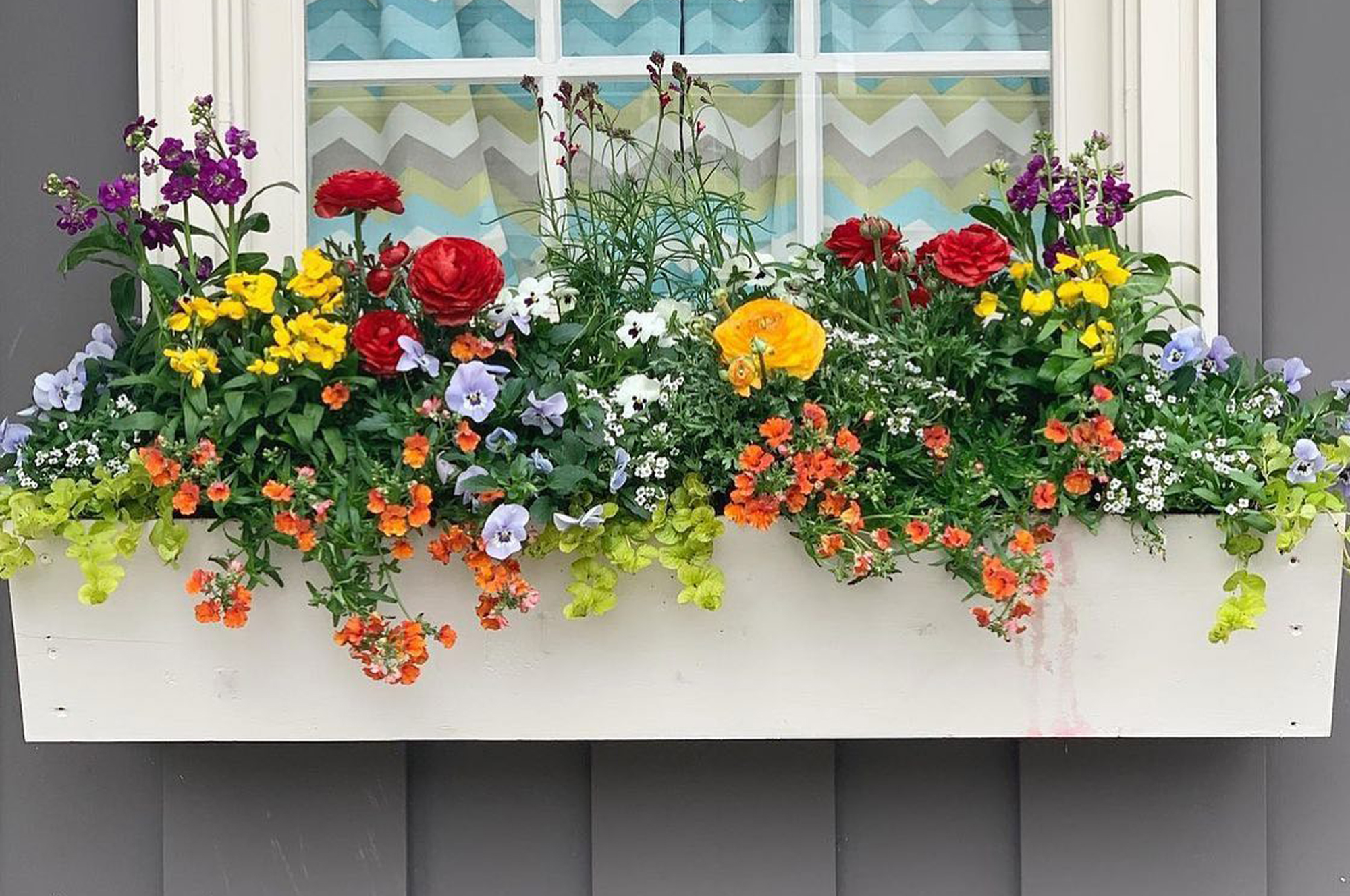
Even if your window doesn't get a lot of sunlight, it doesn't mean you can't get a window box. It just means you need to adapt your arrangement to make sure the plants you use thrive in shadier spots using tried and tested shady garden ideas.
Quinn Roe at Prim Planters says: 'I use plants that thrive with low light in my clients' window boxes. Colorful, shade-loving thrillers, fillers, and spillers are always utilized in order to provide dimension, height, texture, and interest.'
8. Have a plan to maintain your window box
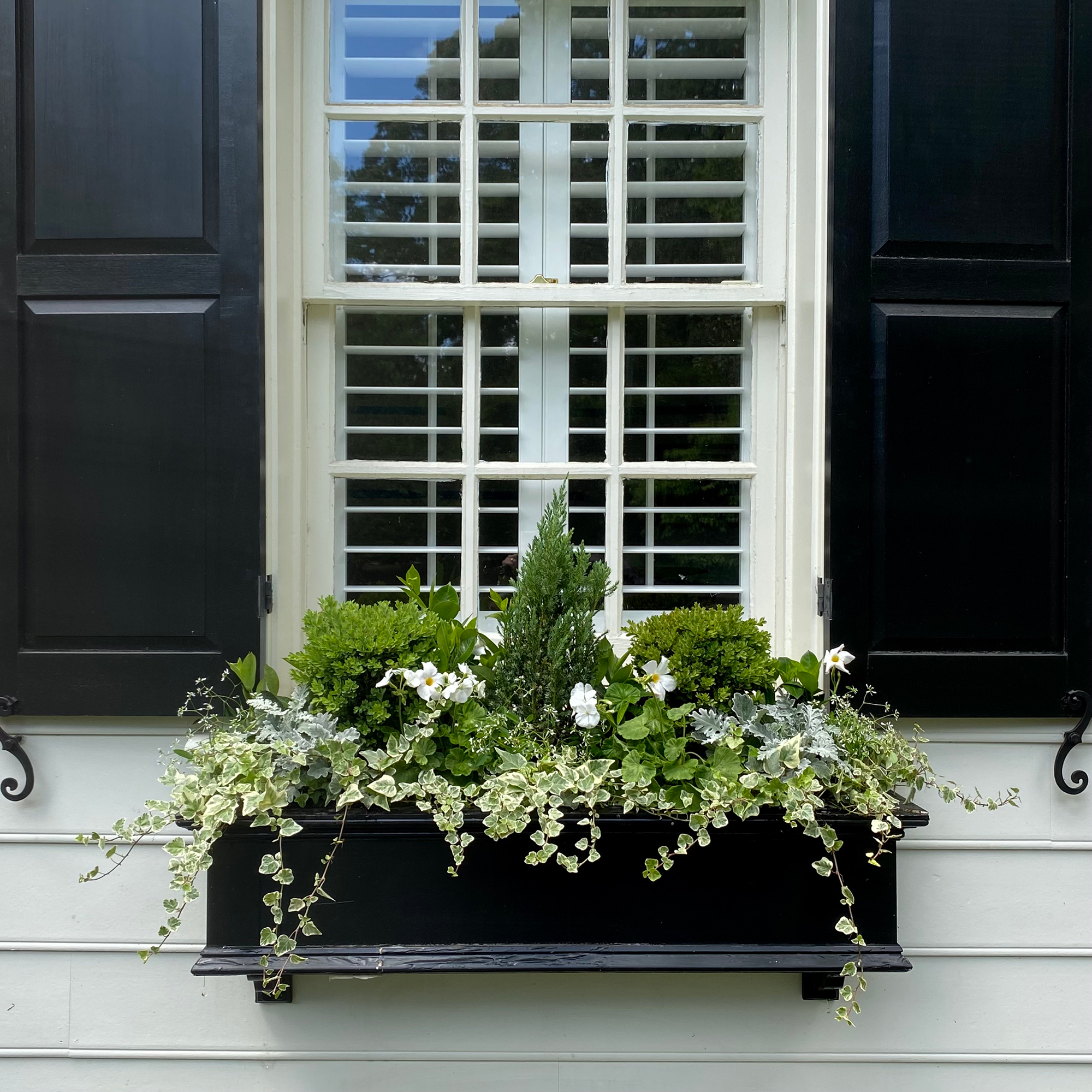
Looking after your window box plants is essential in ensuring they flourish and last all year around. Make sure your planter box has holes in it for drainage so the roots don't drown and begin to rot. You can drill holes into it if needed. It's also important to water the plants regularly and either fertilize the soil regularly or use a slow-release fertiliser when planting that will provide nutrients to the plants throughout the season.
For some plants, Steph Green at Contained Creations recommends trimming them to ensure they remain at the desired size and don't overtake the rest of the arrangement. She says: 'Don’t be discouraged if a plant doesn’t thrive or survive; part of the fun of container gardening is the trial and error it takes to learn what works for you.'
What can you put in a window box besides flowers?
If you want to start a small vegetable garden, window boxes are the answer. Strawberries are great in window boxes as they can grow in small spaces. Chillies, tomatoes and lettuce also thrive in window boxes, particularly where they can get a lot of sun. Not only can they provide food, but colour, too, making for a great window display.
Herbs such as thyme, rosemary, mint, parsley, sage and basil are ideal for window boxes. They're not only staples in the kitchen, but smell beautiful, too. Your window planters can also attract wildlife, too. Arthur Parkinson, author and flower expert, says: 'For those of you with window boxes, the easiest group of bee-attractive plants are a number of herbs – all of the mints, thyme, sage, rosemary and marjoram will be adored and the scent will be wonderful too.'
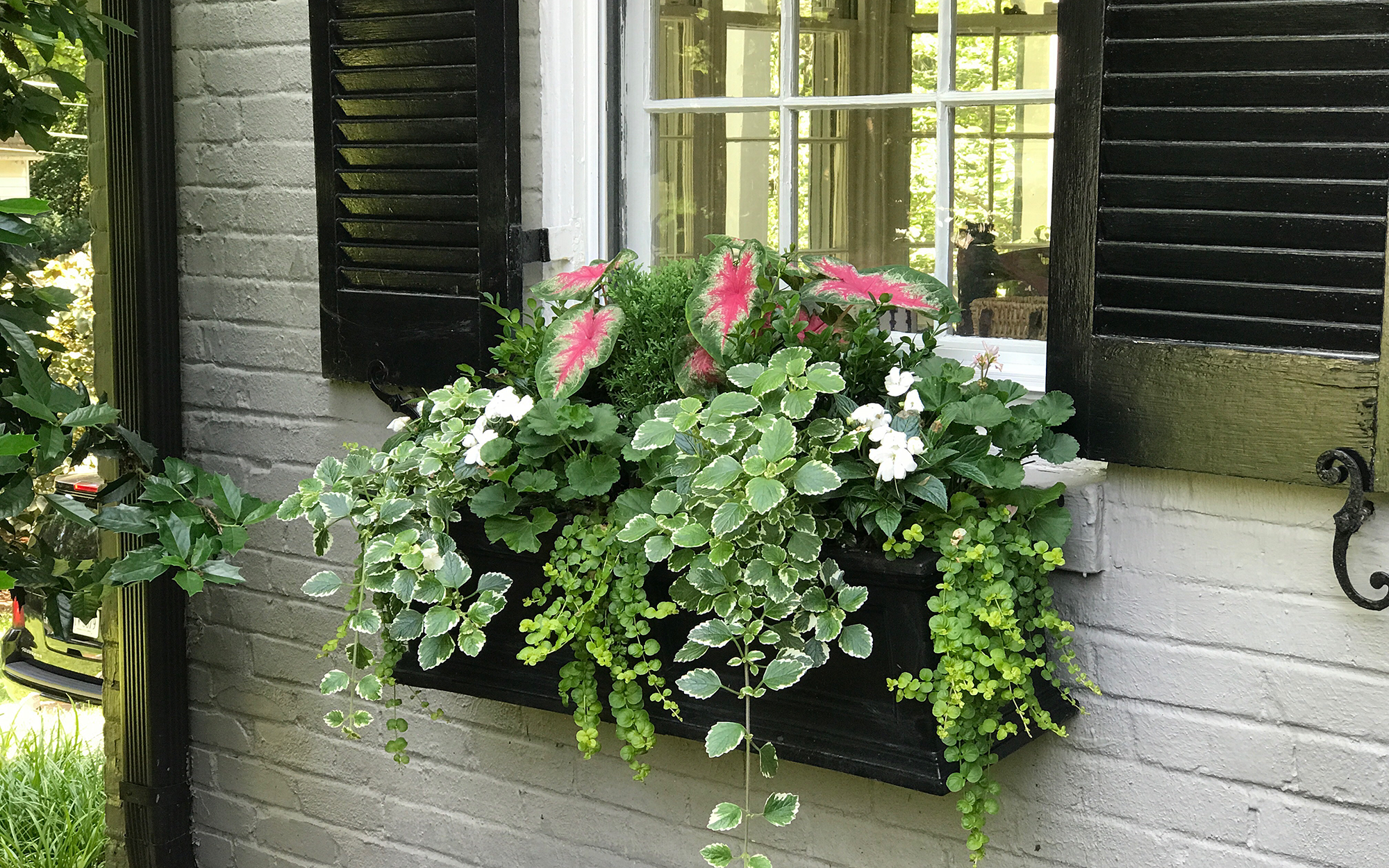
What can you use for window boxes?
There are several different types of window boxes you can use. Wooden planters are versatile options that you can even DIY. You could even trying painting them to add even more colour to your display. Wide, iron hanging wall baskets are simple yet effective, and may be more light-weight and easily manoeuvred when it comes to installing your window box. If your ledge is particularly spacious, you might opt for a terracotta planter or perhaps a galvanized zinc metal trough to sit on the ledge, depending on the look you're going for. This is a simple, fuss-free way to incorporate a window box and add some curb appeal.

Georgina Crothers is currently the Homes Editor at Built It, a design publication covering everything you need to know about building, renovating, and extending your home. She started writing for Livingetc while studying MA Magazine Journalism at City University in London. When she's not writing about everything from underfloor heating, garage extension projects, and 'healthy' homes, you'll likely find her knees-deep in a DIY, binge-watching home renovation and furniture flips on TikTok, or scouring YouTube for the perfect project to revamp her own living space. Her particular passion lies in finding the most creative and innovative self build, renovation, and extension projects around the world.